The Damascene pigeon is a breed of domestic fancy pigeon. It is thought to have originated in Damascus, Syria and the breed was named so for it’s place of origin. The breed was actually developed over many years of selective breeding.
This breed and other varieties of domesticated pigeons, all are descendants from the feral or wild rock pigeon. It is an old breed mentioned in some of the oldest literature regarding domesticated pigeons.
The Damascene pigeon breed is said to be around 3,000 years old. However, read some more information about this beautiful pigeon breed below.
Origin And History Of Damascene Pigeon
The Damascene pigeon is a breed of domestic pigeon that is believed to have originated in Syria, particularly in the city of Damascus, which is where it gets its name. The breed is also known as the Damascene Fairy or the Syrian Damascene.
Damascus has a long history of breeding and trading pigeons, and it is likely that the Damascene pigeon was developed there through careful selection and breeding of various local pigeon varieties. The breed is prized for its beautiful feather patterns and its overall elegance.
Today, the Damascene pigeon is a popular breed among pigeon fanciers around the world, and it is recognized by various breed standards organizations, including the National Pigeon Association in the United States and the British Pigeon Fanciers Association in the United Kingdom.
Damascene Pigeon Characteristics
Damascene pigeon is a medium sized bird with very beautiful appearance. Two most striking features of these beautiful birds are the dark plum eye ceres and the bright eyes.
Their head is fairly large and somewhat round, with moderate stop over the wattle. Their eyes are very bright, and the ceres are of damson or plum color. They have blunt beak which is of dark color and stocky. And the beak is nearly as wide as long. Their breast is broad, prominent and protrudes forward.
Wings of the Damascene pigeon are held tight against the body, lying over the tail with the tips just touching. The feet and legs of these birds are dark red in color with black toenails. Average live body weight of the mature Damascene pigeon is between 370 and 425 grams.
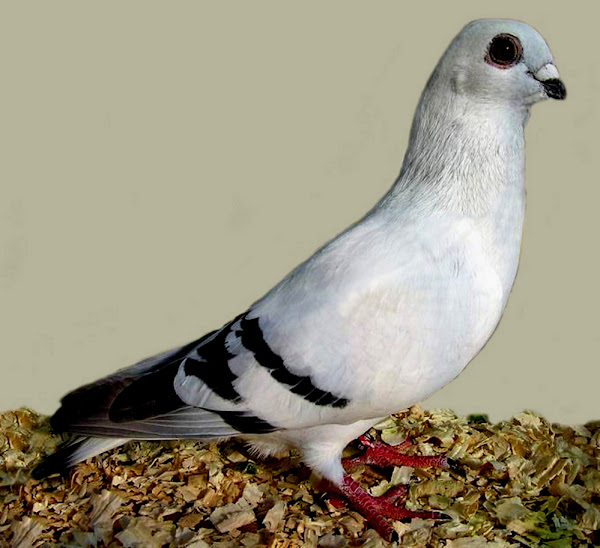
Feeding
The feeding requirements of Damascene pigeons are not significantly different from those of other domestic pigeon breeds. A good-quality commercial pigeon feed should make up the bulk of the Damascene pigeon’s diet. These feeds are typically formulated to provide all the nutrients that pigeons need to thrive, including protein, vitamins, and minerals.
Access to clean, fresh water is essential for all pigeons, including Damascene pigeons. Make sure to provide a source of fresh water at all times, and clean and refill the water dish regularly. In addition to pigeon feed, Damascene pigeons can benefit from occasional servings of fresh fruits and vegetables. Good options include leafy greens, carrots, peas, and apples.
Pigeons require grit to help digest their food, and oyster shells are a good source of calcium, which is important for healthy bones and egg production in female pigeons.
Breeding
Breeding Damascene pigeons requires a good understanding of the species’ behavior and needs. If you are new to pigeon breeding, it’s a good idea to seek advice from experienced breeders or avian veterinarians. Breeding Damascene pigeons requires careful attention to several key factors. Choose birds that are healthy, active, and have good feather patterns. Look for birds with good posture, bright eyes, and clean feathers.
Provide a spacious, clean, and well-ventilated breeding loft for your Damascene pigeons. The loft should be free from drafts and kept at a comfortable temperature. Provide nesting boxes filled with clean, dry nesting material. Damascene pigeons typically form monogamous pairs during the breeding season. Allow the birds to choose their own mates and provide privacy for the pair during the mating and nesting process.
Damascene pigeons typically lay two eggs per clutch, and the eggs hatch after about 17-19 days of incubation. The parents will take turns incubating the eggs, and both parents will help care for the chicks once they hatch. Feed the chicks a special “pigeon milk” produced by both parents, which is rich in protein and nutrients. As the chicks grow, they will also begin to eat small amounts of solid food. Make sure to provide a balanced diet for the parents and chicks, and monitor the health and development of the young birds closely.
Uses
The Damascene pigeon is a show breed in the United States. And raised as a utility bird in Europe. They are primarily kept for exhibition purposes and as pets, rather than for utilitarian purposes like egg or meat production.
Special Notes
The Damascene pigeon is a very strong and hardy bird. It is very intelligent and will benefit from the exercise of being flown. Although it is a show bird, not racing or homing, but the birds are still worth seeing in flight.
These birds can drop straight down into the loft from a height of perhaps a 100 ft or so. These birds have also a reputation for being good parents, and they care for their own young longer than many other domestic pigeon breeds.
They are pretty long lived birds with an average lifespan of about 10 years. Review full breed profile of this breed in the following chart.
| Breed Name | Damascene |
| Other Name | None |
| Breed Purpose | Exhibition, pets |
| Special Notes | Beautiful birds, attractive appearance, excellent for show purpose, good for raising as pets, very strong and hardy, very intelligent, good parents, long lived with around 10 years of lifespan |
| Breed Class | Medium |
| Weight | 370-425 grams |
| Climate Tolerance | Native climates |
| Flying Ability | Good |
| As Pets | Good |
| Color | White |
| Rarity | Common |
| Country/Place of Origin | Damascus |

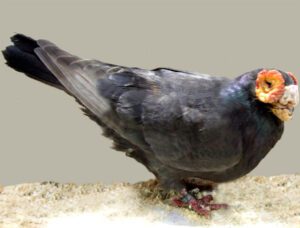
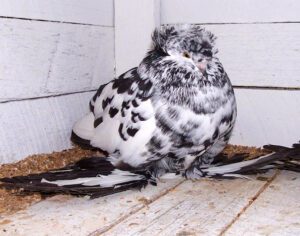
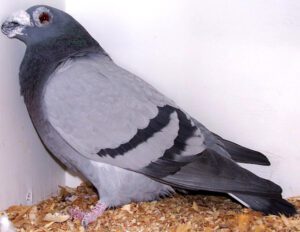
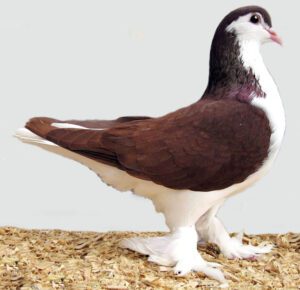

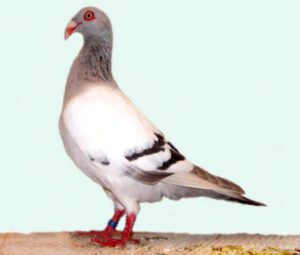
i have Damecene pigeons here, they ate very intelligent pigeons